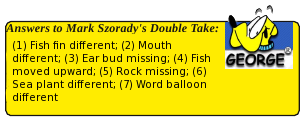Computer Languages from A - Z - XML
by Gary L. Ratliff Sr. (eronstuc)
This is the first time in this series in which we have encountered a markup language. Perhaps the most well known markup language is HTML which is used to markup almost all the pages of the web. This stands for Hyper Text Markup Language while XML stands for Extensible Markup Language. This is a meta language which is used to define other markup languages.
To research this, article I found the book which my wife had given me many years ago, called: XML Bible, by Elliote Rusty Harold, published by IDG Books Worldwide in 1999. Then, I wrote the author to ask about a comment he had made concerning the lack of support in Linux at that time. He wrote back to let me know that this book was about four issues behind and that I should obtain and use XML 1.01 Bible.
As I read the text, it became obvious that much of the material was dated. Now consider that if you have been using Linux for a long time, what was the difference in the Linux you use today, and that of 1999 (perhaps at that time I was using Mandrake 7.0). It lacked many features we take for granted in today's versions, including the ability to produce sound. To do that I had to purchase a separate system from OSL which allowed me to hear sounds on the system. Nor were there any productivity suites such as OpenOffice at the early days.
The most useful feature of this volume is the example markup files provided by the included CD-Rom disc. This includes the text of the Old and New Testaments, the Koran, the book of Mormon, as well as the complete plays of Shakespeare (this one in full XML Markup language).
Here we see a portion of the play Hamlet, in XML markup.

Unlike HTML which has fixed tags, XML allows you to define your own. Then, their behavior is defined in style sheets and DTDs (Document Type Definitions). There is a language which has HTML in XML aptly named XHTML. This language defines 28 different modules, 26 of which must be included to even begin the simplest HTML document. XML is thus a very complicated system to learn. You may choose the path I did, and pursue reading a 1200 page tome, or you may more easily rely of the references and tutorials provided on the Internet to continue your learning of the uses and correct expression of XML.
When I first started this series I called it: An Alphabet of Computer Languages, the object being to provide examples of twenty-six languages one for each letter of the alphabet. Now I have mentioned that XML is used to create other markup languages. That fact is brought out by the Wikipedia article, which reveals that I might be able to just as easily write a series as An Alphabet of XML Markup Languages.

As you can see, the index has spaces for every letter of the alphabet. The article just lists the purpose of the example languages. There are several listed under each letter in almost all cases.
Currently, XML is in version 1.1. However, a version 2.0 has been proposed. Actually, version 1.0 seems to be the more widely used at this time. You need learn to use the DTD and style sheet (either CSS or CSS2.0 of XSL, an XML based style sheet, to show the proper display of the material).

The above screen shot shows how the article on XML found in the Wikipedia introduces the material on using the DTD of XML.
For a tutorial to XML, I recommend that provided by W3Schools, from which the following example page is provided:

As you can see, there are several lessons involved. After spending some time in learning the material, you may learn how to use the XML tool to your own purpose.
Next time, we will discuss the language Yorick. I know it has been quite some time since the last article. Since then, I decided to visit the Emergency Room of the local hospital to learn why I was in so much pain. It seems that the brand of arthritis I have makes just moving about rather painful. This does not inspire sitting up and writing. So, as this article has been written, you should know that I am feeling much better.
Also there are now only two articles left till the end of the series.
